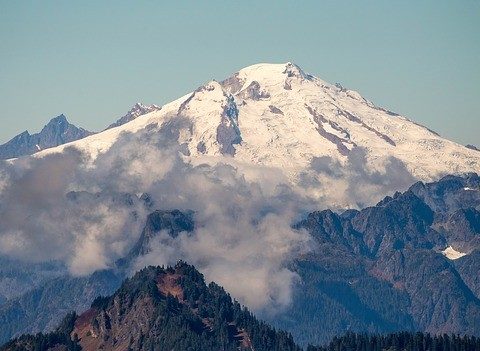While the cooler and drier climate of living high up in the mountains is terrific for powder snow in the winter and cool summer nights, it can be a challenge when baking in the kitchen. High altitude cooking and baking can be discouraging, but it’s not impossible. It is important to know that most sea-level recipes work up to around 3,000 feet. Above that, they typically require adjustment(s) to be successful.
The main factor affecting baked items is the low pressure resulting from the higher altitude; this leads to lower boiling points, faster evaporation and rapid rising. In addition, low humidity can dry ingredients out resulting in a dry texture and crumbly product. I use three basic adjustments for high-altitude baking: reduce leavening agent, reduce sugar, and increase liquid. Often, one or all of these things is enough to adjust a sea level recipe successfully. Keep in mind that every recipe is different and any or all of these adjustments I suggest may be required.
1. Decrease Leavening Agents:
When adjusting a sea level recipe, for each 1 teaspoon of leavening agent called for, decrease it by 1/8 to 1/2 teaspoon.
2. Increase Liquid:
Because at higher elevations, faster evaporation occurs and drier climates can lead to a drier product to begin with, it’s important to add additional liquid in any recipe. Also, flavors in baked goods can become weaker or less pronounced as there are fewer moisture molecules to carry the essence; adding 1/2 to 1 teaspoon extra of whatever flavoring you’re using will assure a flavorful baked good. When adjusting any sea level recipe, add 2 to 4 tablespoons more liquid per 1 cup called for.
3. Decrease Sugar:
The increased evaporation also results in the concentration of the sugar in the recipe. This leads to a weaker structure. As we noted above, a weak structure leads to fallen cakes and flat cookies. When adjusting a sea level recipe, decrease the amount of sugar by 1 to 3 tablespoons of sugar per cup called for. I rarely measure but generally do a scant cup for each 1 cup called for.
Continue on to the next page for additional high-altitude/low-altitude cooking adjustments to make …

